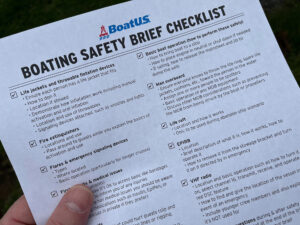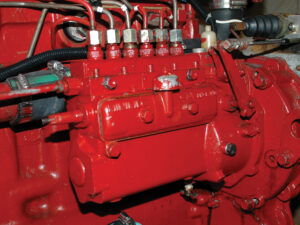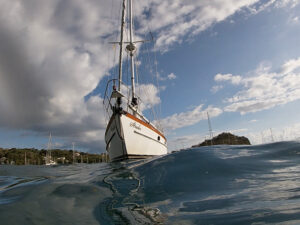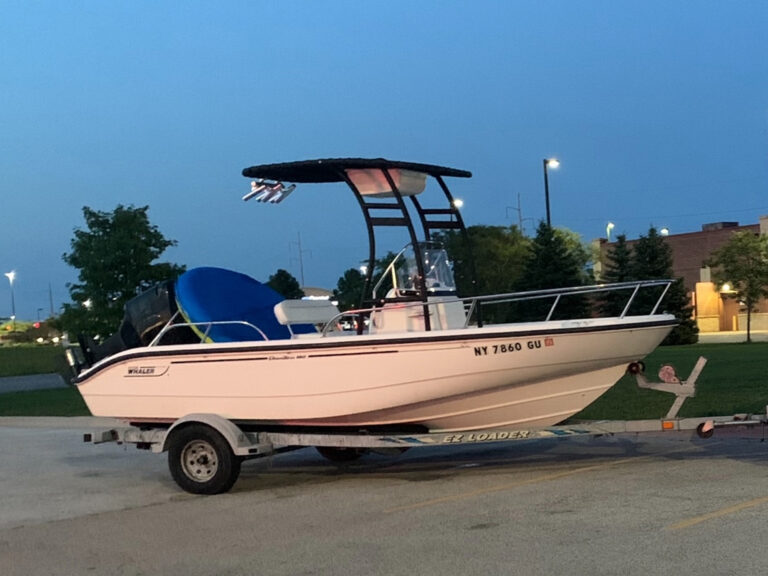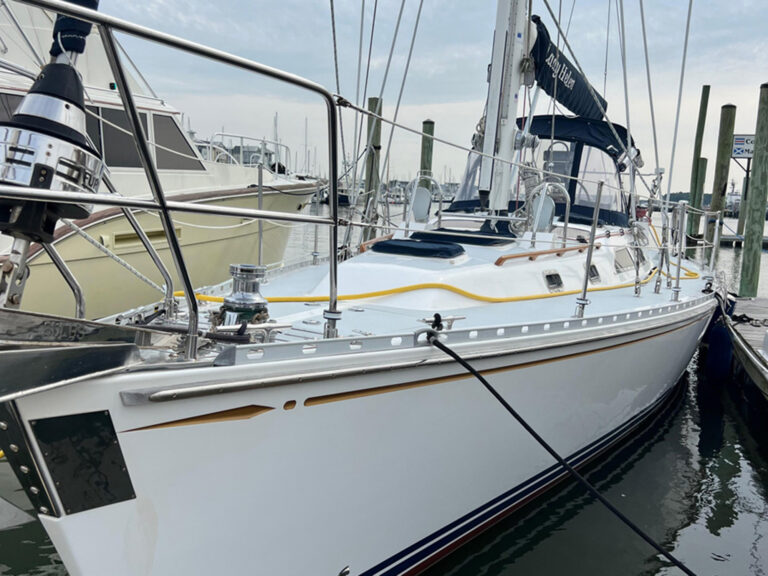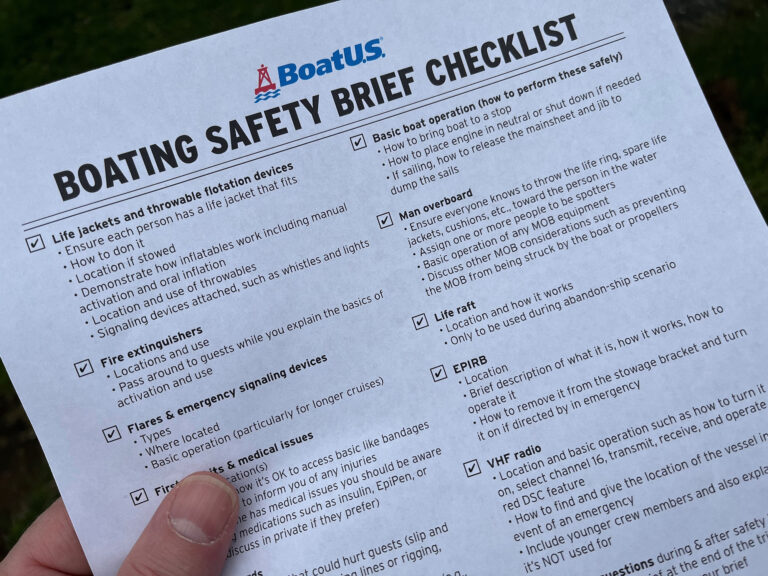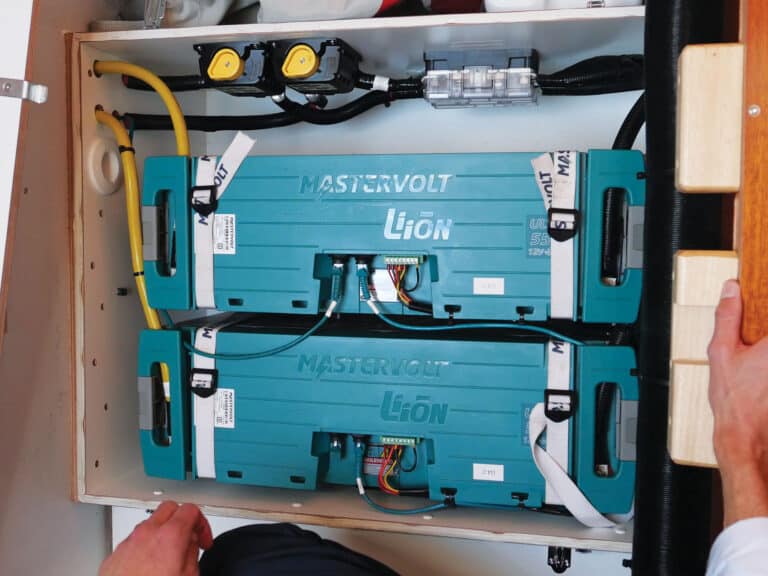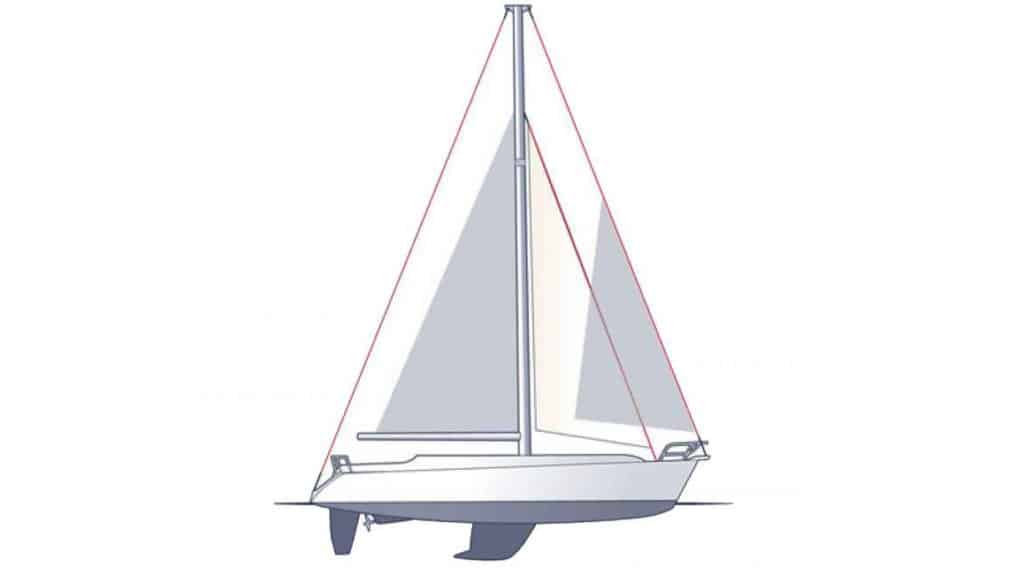
Cruising Quiver
Anyone who’s knelt on a pitching foredeck to wrestle down and tame a hanked-on genoa will thank Neptune that some salty tinkerer invented roller-furling headsails. On almost any sailboat nowadays, sail area can be reduced or genoas doused from the cockpit with just a pull of a line. But that little drum on the bow that’s made sailing safer and easier has also lured many a sailor into thinking that one sail-the ubiquitous 135-percent genoa, perhaps-can do it all.
In fact, it can’t, sailmakers I spoke with agreed that though roller-furlers make any one sail more versatile, you still need more than one arrow in your quiver if you’re setting off for any extended length of time and if your cruising will take you across a range of wind and sea conditions.
“The furling sail is the ultimate compromise sail,” says Adam Loory of UK-Halsey International. And he’s right. On the one hand, a furling headsail can be set and left on the forestay all season, but on the other, in changing conditions, it may not be the best one for a particular job. And, notes Loory, the sun cover that protects the sail and the foam luff that makes it furl properly compromise its overall performance.
In general, Loory says, a sail can be reefed down to one size smaller, say from a 135-percent genoa to a 110-percent genoa, but beyond that, it loses its intended shape.
Will Welles at North Sails wants to know about his customers before he’ll even begin to recommend what’s needed. “The first question I always ask them is what are you doing with the boat? Where are you going and how are you using it?” In other words, if you’re sailing inshore or coastal cruising or headed for bluewater, your needs will be different.
Even if the owners aren’t heading off for far horizons, Welles will often recommend that they have multiple headsails. In the spring and fall, when winds tend to be stronger, a smaller working jib, say a 100-percent genoa, can be used. Then during the summer, you can go to a larger sail for the lighter air that many areas experience.
“Ultimately, you end up getting more life out of your bigger genoa if you purchase a smaller jib, too,” Welles says. That’s the optimum cruising inventory for your standard sailboat.
Indeed, along either U.S. coast, sailors face the same dilemma when it comes to knowing what sails to bring. In San Francisco, where the sea breeze often honks into the high 20s and above, you tend to see sailboats carrying relatively small headsails and reefed mains to match the conditions. But if that sailor heads south to, say, San Diego, where the breeze is typically in the low teens, he or she will be doing a lot of motoring if there isn’t a change of canvas on board. Similarly, an East Coast sailor headed south from Boston, where a 140-percent genoa might serve well for most of the summer, will find the boat on its ear when it leaves the Cape Cod Canal and enters Buzzards Bay, where every afternoon a 30-knot blow can be expected to kick up a nasty chop. A large headsail, reefed by more than 20 percent of its sail area, quickly loses the power needed to plow through such sea conditions; a boat now needs to fly a smaller, more efficient jib. And by the time that same cruiser reaches the Chesapeake, the call will be for a large, lightweight sail for the notoriously light conditions often found there.
The trick, then, is for sailors to anticipate conditions and pack their sail bags accordingly.
One option that’s employed by several sailboat designers these days, notes UK’s Loory, is the so-called solent rig, which uses two headstays that are set fairly close together, both with roller furlers. On the forward stay, a big genoa or light-air reaching sail can be set for going to windward in light air or for sailing deeper angles when the breeze is up. On the inner stay, a working jib-often a self-tacking sail-is used when sailing hard on the wind or in higher breezes when cracked off.
Or, says Bob Pattison of Neil Pryde Sails, cruising boats can employ an inner forestay on which a hank-on or roller-furling staysail can be set. Often, this staysail will be of a heavier cloth and will have reef points so it can be used as a heavy-weather jib.
On other boats that have just a single forestay, Pattison often recommends an 85-percent jib with a high clew and hoist so it’s up off the deck and won’t be damaged by waves. Offshore, where conditions can be windy and rough for days, such a sail wears well and affords excellent visibility.
Bob Phillips, the managing director of Doyle Sailmakers in the British Virgin Islands, says in general that many boats arriving from the States have sails that are just too big for the conditions in the Caribbean. A 120-percent genoa is the sail of choice for trade-wind sailing, he says, where wind speeds hover in the 20s and 30s. In those conditions, the sail provides plenty of power for reaching between islands, can handle running in the trades, and can be furled down, if need be, when sailing to windward.
“The first thing people should be aware of is that their primary roller-furling headsail should be of a size that, unrolled, should work 85 percent of the time,” Phillips says. In the conditions found in the islands, a 135- percent or 140-percent headsail is just too big. “You’re sailing with the rail down all the time. It’s hard on the boat and the crew, and it’s not pleasant cruising.” Bottom line: You want a sail that’s easy to use.
Reefing a sail beyond what’s intended distorts the sail and loads up the threads in ways that can damage them and shorten the life of the sail, Phillips says, a view that’s echoed by Quantum Sail Design Group’s Barry Gately.
“I think people get complacent sailing around with the ability to furl,” says Gately, who recommends having the right amount of sail up for the conditions and not overfurling a large sail when changing to a smaller one would be the better option. “I just look at it as what it’s doing to the sail. It’s a big investment. I wouldn’t race the engine on my car for no reason.” He suggests that his customers carry a large genoa built of, say, 6-ounce cloth and a small working jib of 8-ounce cloth.
“If the boat’s sailing on its lines, it’s going to go faster, be balanced, and be more stable,” Gately said. An overpowered sail plan, he adds, taxes both the helmsman and the autopilot.
What’s in the Editor’s Cruising Quiver?
• 150-percent genoa: This is a racing-type sail that I seldom use on my Sabre 34 because it doesn’t reef or furl well.
• 135-percent genoa: On my boat, this is the working sail for most conditions. The boat moves reasonably well in light air, and I can fly this sail efficiently in up to about 25 knots of wind.
• 110-percent genoa: If I’m headed off on a trip, I always have this sail on board. If windy days are forecast or big sea breezes are expected, I’ll set this sail well in advance.
Mark Pillsbury is the editor of Cruising World

